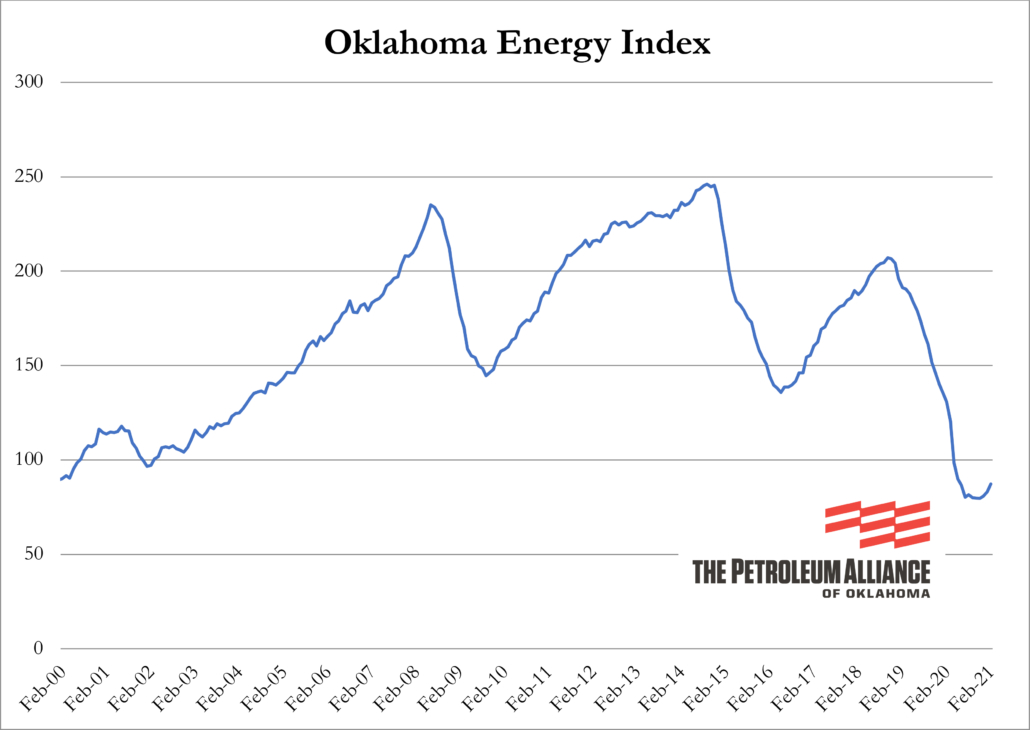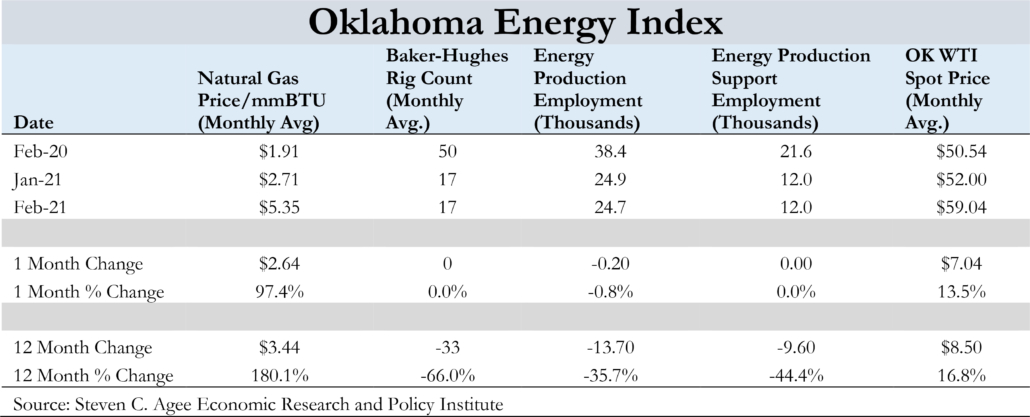Energy Index projects slow return of oil and gas industry in Oklahoma
[av_post_meta av_uid=’av-8xupd’]

The downward trajectory of Oklahoma’s oil and natural gas industry has reached its lowest point, but the state can expect a slow return to levels not seen since the close of 2018.
Economist Russell Evans, who compiles the Oklahoma Energy Index (OEI), said while improving crude oil prices have helped minimize the economic pain felt by the industry since the COVID-19 pandemic shrank demand for petroleum products around the world, the current price environment is not yet sufficient to launch a robust recovery of the state’s defining industry.
“Even as prices move modestly higher, we expect a prudent response in Oklahoma with new drilling activity returning slowly,” said Evans, executive director of the Steven C. Agee Economic Research and Policy Institute. “An upside move to recovery may yet be some time away.”
The Energy Index now stands at 97.3, an increase of 4.2% from the previous month but still 33.2% less than one year ago.
The OEI is a comprehensive measure of the state’s oil and natural gas economy established to track industry growth rates and cycles in one of the country’s most active energy-producing states. The OEI is a joint project of The Petroleum Alliance of Oklahoma and the Steven C. Agee Economic Research and Policy Institute.
This month’s Energy Index shows no growth in rig activity with only modest improvements expected throughout the spring, Evans said. Employment in the oil and gas sector shed an additional 200 jobs and, because oilfield employment tracks with rig activity, little jobs gains are expected in the near future.
Evans noted that future Indexes will see an artificial move higher due to the record-breaking cold in February that drove natural gas demand and prices aggressively higher. Average natural gas prices quickly returned to previous levels, but that two-week blip on the natural gas prices radar will have a positive, although short-lived, impact on future Indexes.
Petroleum Alliance President Brook A. Simmons said Oklahoma’s oil and natural gas industry is similar to the state’s other benchmark industry — agriculture — when it comes to managing factors outside of their control.
“The oil and natural gas industry is at the mercy of the market,” Simmons said. “Like farmers who sell their wheat and ranchers who sell cattle, the men and women of the oil and natural gas industry simply take the price the market gives them for the oil and natural gas they produce. Oklahoma farmers, ranchers, and the people of oil and natural gas often face the same challenges – from the weather, to not controlling the prices of our products. So we focus on what we can control, producing and delivering the energy Oklahomans need and growing our economy together.”





